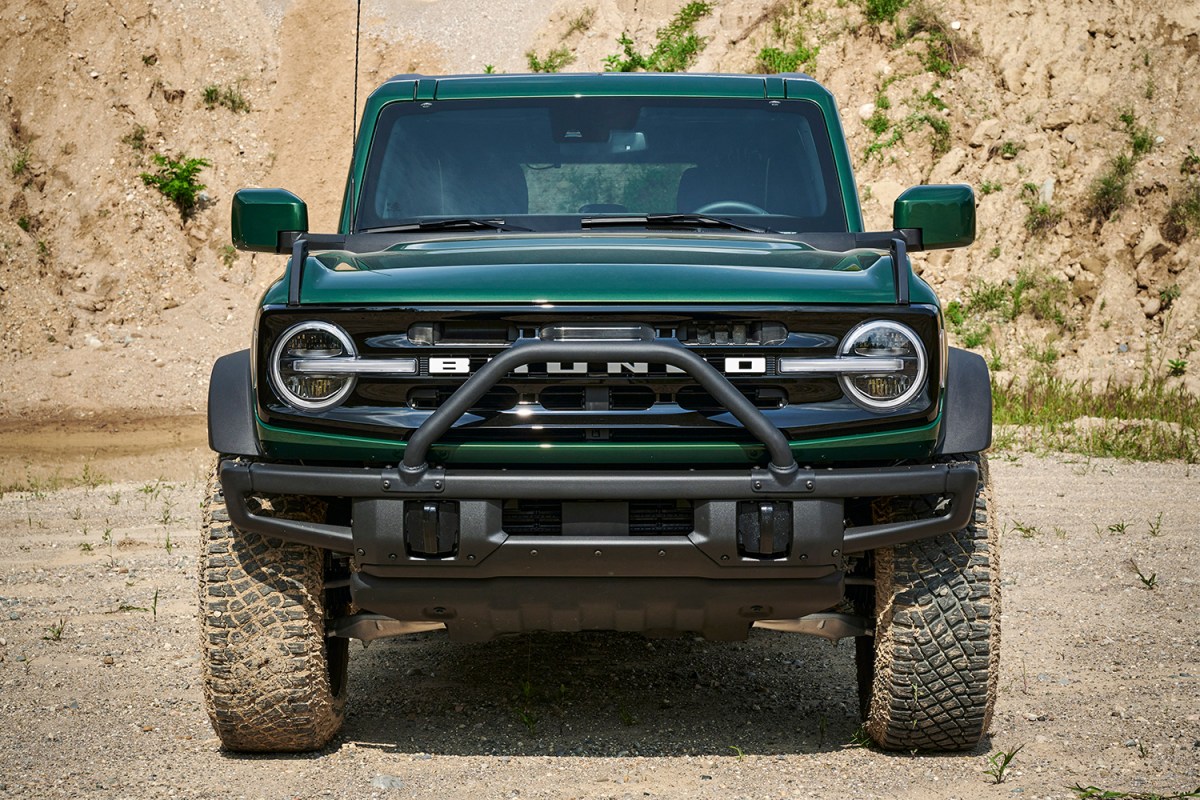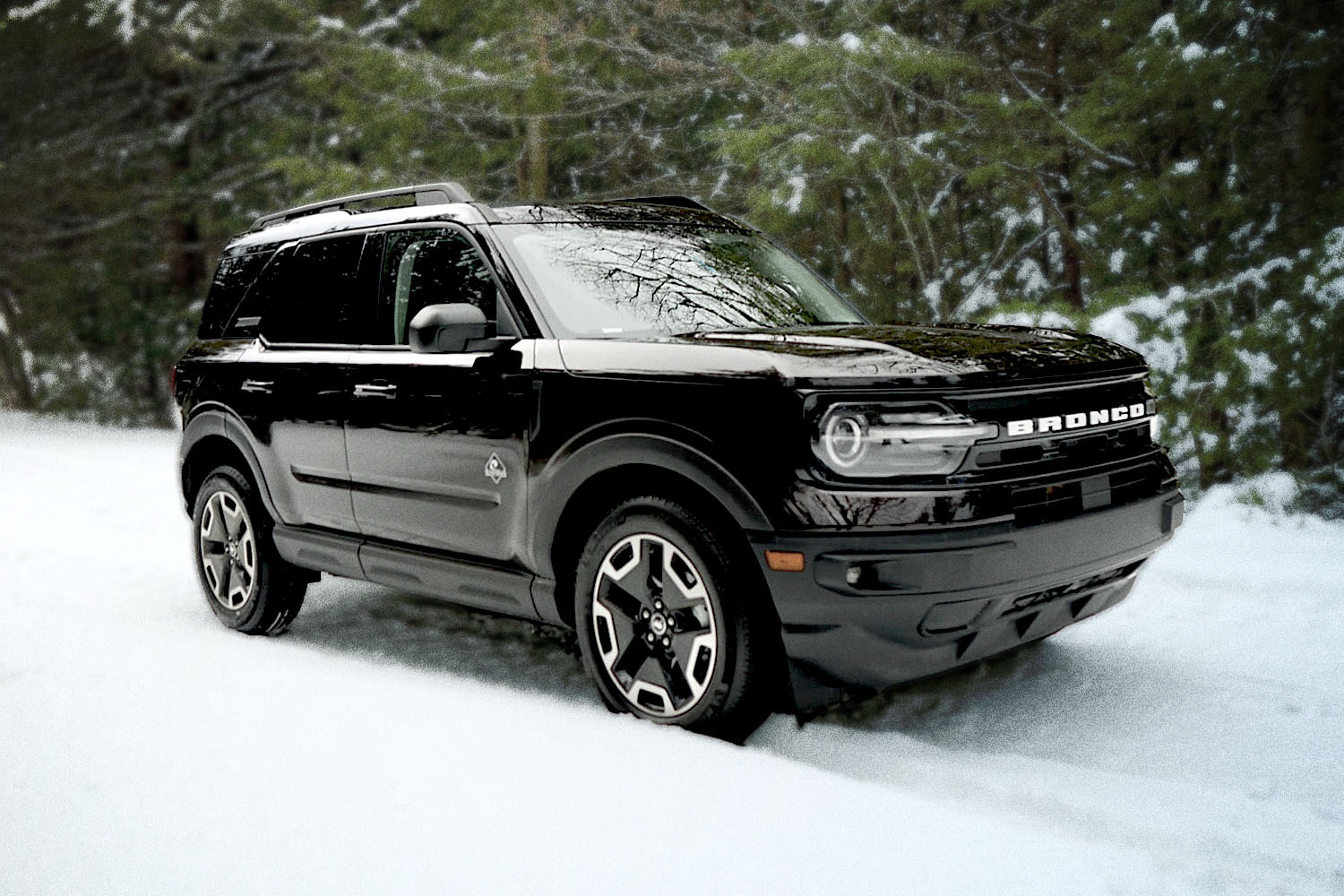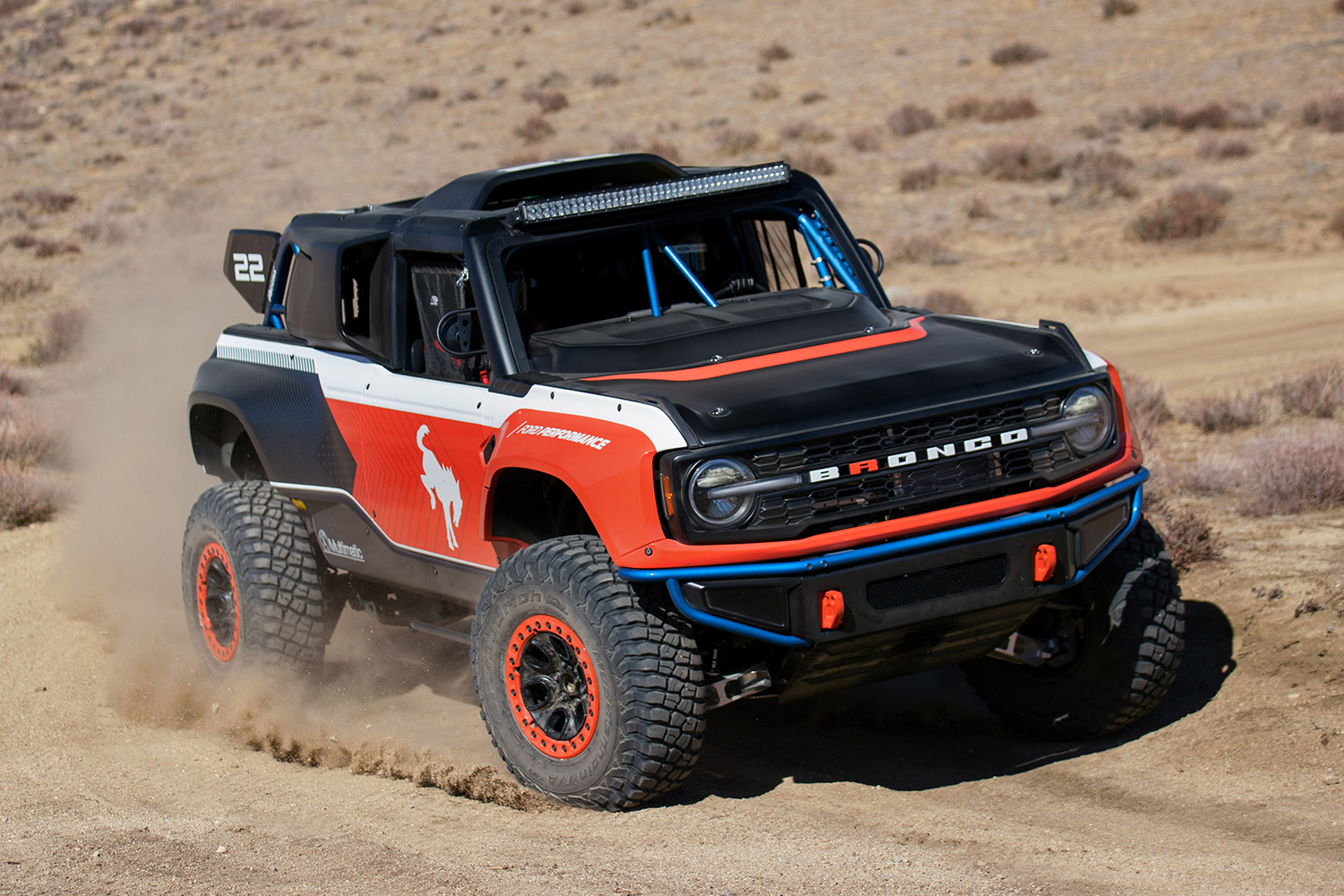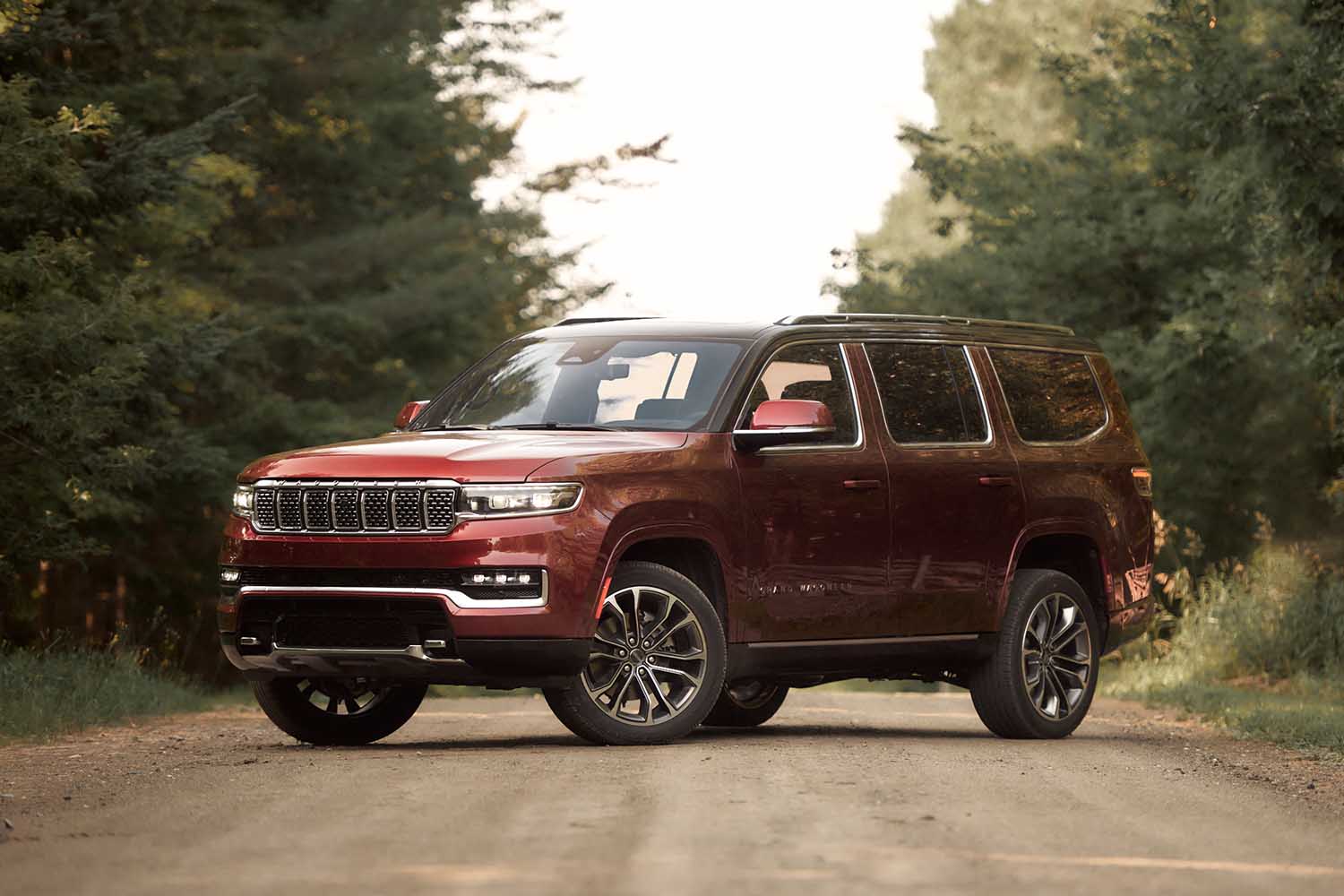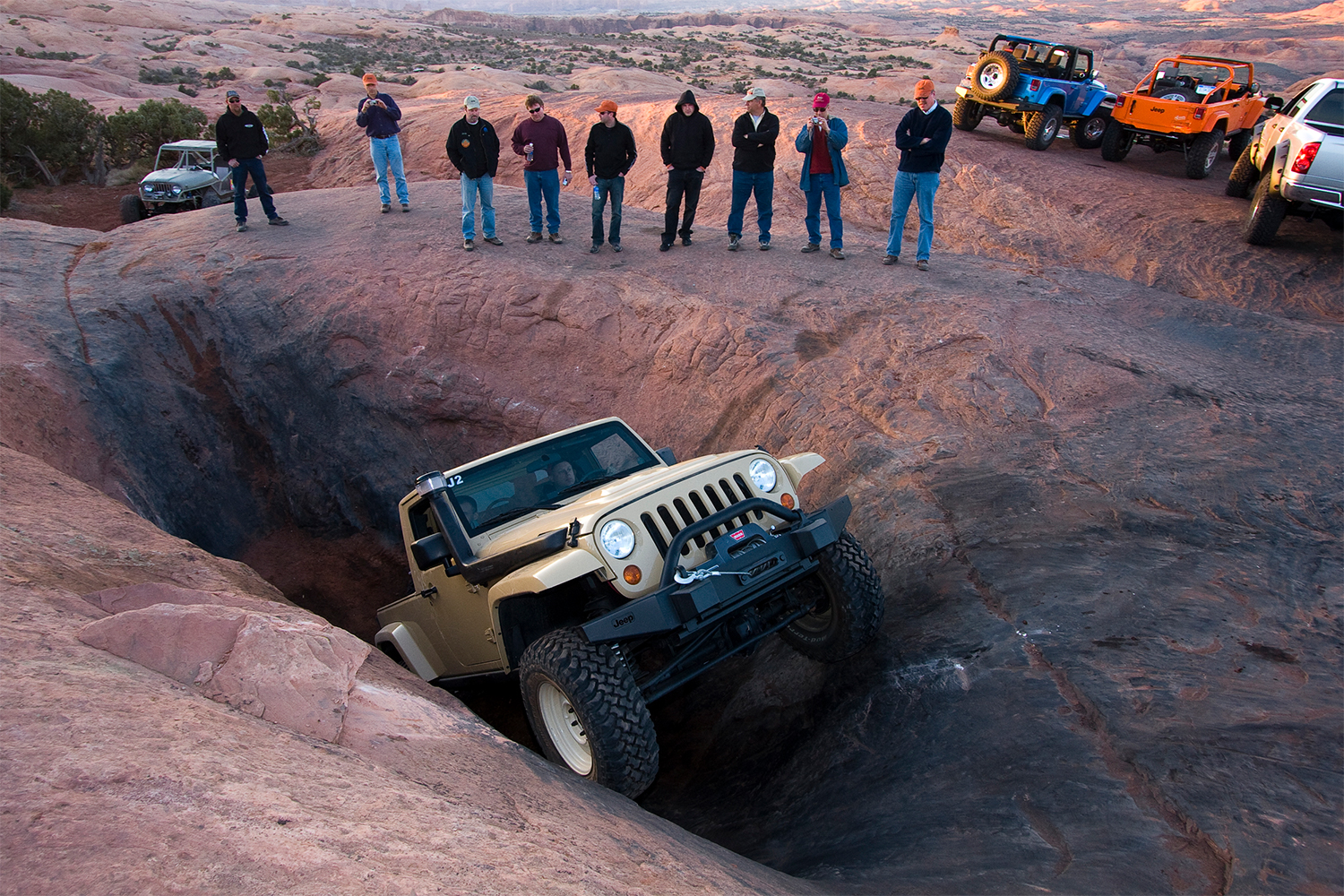Was there a more hotly anticipated addition to the SUV universe over the past 12 months than the Ford Bronco? Leveraging retro looks and go-anywhere capability, and riding in under a heavy cloud of hyped-up heritage, the Bronco quickly became the darling of off-road fans and mall-crawling wannabes alike. A combination of this surging demand and a number of supply chain issues quickly transformed Ford’s order sheets into a minefield of dealer markups and extended delivery wait times, but the clamor for the Bronco remains unabated.
Tough mud slingers like the new Bronco have long found themselves measured against the Jeep Wrangler, and with good reason. Jeep’s anachronistic 4×4 has seen challengers come and go over the years, all the while sticking to the same body-on-frame, dual solid-axle formula that links back to the original CJ, or civilian Jeep, that pioneered sport-utilities after World War II.
After spending time with the Bronco Wildtrak, it’s clear that the Blue Oval has also made the Wrangler a target. Ford certainly co-opts much of its competitor’s core construction, but buries it beneath a layer of electronic assistance that flips the Bronco’s approach to leaving the asphalt behind, part and parcel of the awkward straddle the truck is forced to make between the ghosts of trail machines past and the realities of the modern SUV market.
The end result is a beefy rig that is in many ways a match for the perennial Wrangler, but at the same time out of step with the evolution of sport-utility design outside the hardcore wheeling space. Whether this matters to you as a potential customer depends largely on what sacrifices you’re willing to make to drive the rebirth of legend on a daily basis.
Starting From the Top
“Wildtrak” is Ford-speak for dune-bashing speed and abuse-absorbing suspension tuning. Representing the top-tier edition of the Bronco, it marries HOSS (“High-Performance Off-Road Stability Suspension”) shocks and springs with a 2.7-liter, turbocharged V6 that pushes out 330 hp and 415 lb-ft of torque when fed with premium fuel. Trainspotters will note that the Wildtrak makes the SUV’s optional Sasquatch package standard equipment, which imparts it with burly 35-inch M/T tires, and the inclusion of the V6 means an automatic transmission is also along for the ride (boasting 10 forward speeds).
The Bronco’s undercarriage is fit for hardcore duty, featuring a full frame cribbed from the global Ranger pickup (with the platform a heavily updated version of the truck’s T6). This means there’s a solid axle riding out back, but an independent setup at the front of the vehicle, making a compromise between all-out strength and traction in high-articulation situations, and the desire to provide more civilized steering and handling than an old-school stick axle ever could.

The Real Off-Road Deal
In terms of clearing obstacles, breast-stroking streams and climbing rock-face, the Wildtrak is a step ahead of nearly every other SUV currently available, limited primarily by the mud-focused tread of its enormous rubber than by any design foibles. In contrast with the Jeep Wrangler, which relies on owners to strategize their way across tough terrain by engaging its locking differentials and low-range four-wheel drive gearing via manual controls, the Bronco instead eases you in by way of its various GOAT, or “Go Over Any Type of Terrain,” driving modes.
Accessible via a simple dial on the center console, GOAT allows for a set-it-and-forget-it approach to off-roading, an altogether different experience that will certainly appeal to beginners but might bore adventurers seeking a more engaged expedition. Fortunately, Ford also provides more granular control over differential locking, as well as the use of its brake-pegging anchor turn system that pirouettes the truck in tighter quarters.
The Flip Side of Rugged
As formidable as the Ford Bronco Wildtrak might be on the trail, it unfortunately also adopts — and in some cases amplifies — the bad behavior of its Wrangler bogey on the road.
The independent front suspension system certainly improves straight-line tracking compared to a solid axle setup, virtually eliminating any tendency to deviate from true at high speeds as well as banishing bump steer across rougher pavement (two of the most tiring aspects of the Jeep platform). That being said, in virtually every other respect the Bronco charts a course that’s at odds with the expectations of any modern sport-utility vehicle.
Noise from the tires, the wind and the drivetrain permeates the cabin, making conversation difficult and muddying even the premium sound system installed in the Wildtrak trim. This is joined by a symphony of squeaks from the vehicle’s hardtop, which regularly protest the request to remain rigid over bumps and turns. Changing direction in the Bronco is also a task best accomplished at modest mph, as the behemoth proportions of my four-door tester informed every cornering request.
Overall, the Ford’s uncouth mannerisms had me soft-pedaling the twin-turbo V6, which is a shame because the engine delivers exceptional acceleration for such a heavy vehicle. It’s unusual for me to totter around at five under the speed limit, but that was my comfort zone during an extended road trip with the Wildtrak. Perhaps it was for the best, as I managed just 16 mpg in combined driving even with a relaxed attitude on the accelerator.
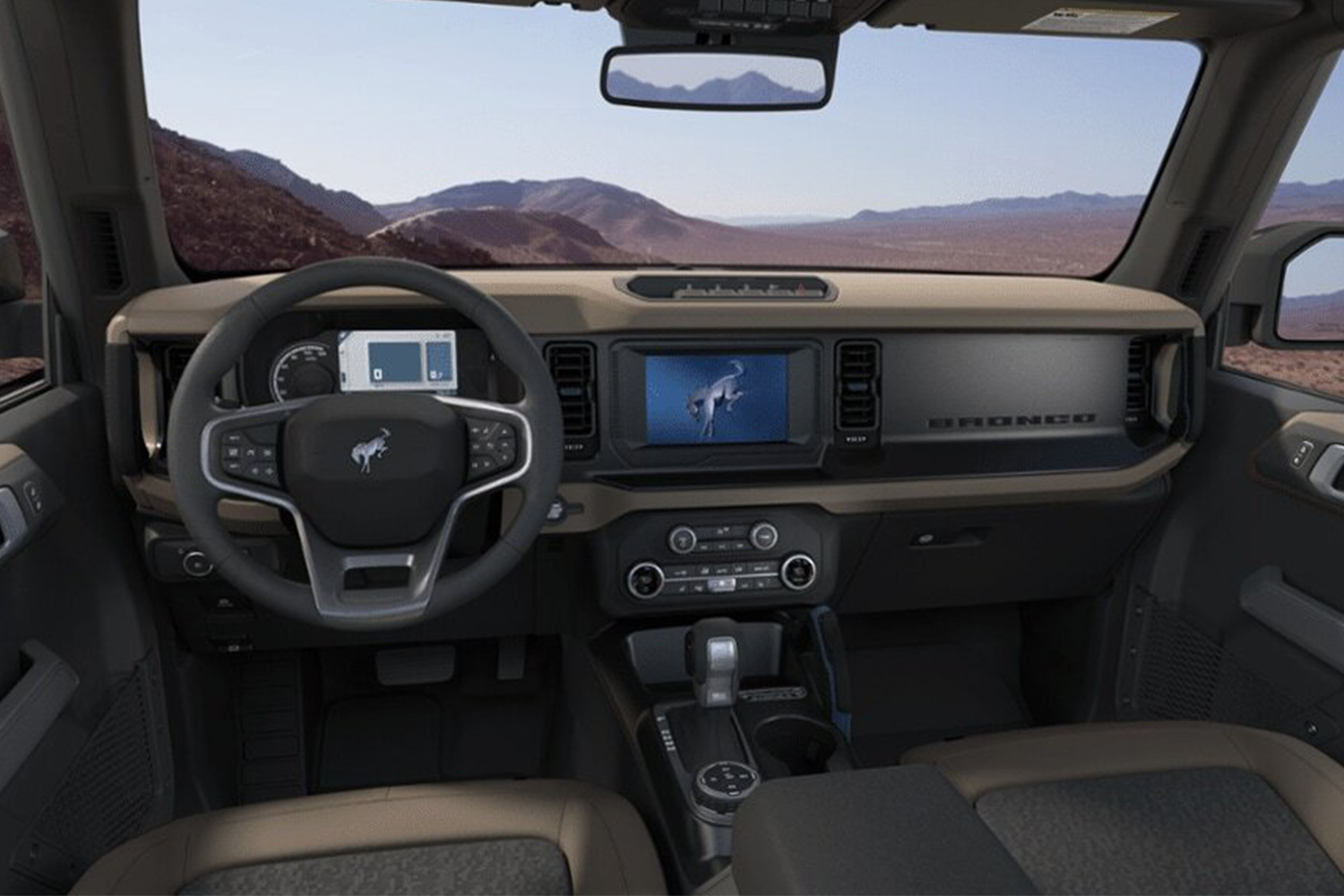
Digitally Deconstructed
It’s not reasonable to expect a truck-based SUV stomper like the Ford Bronco to match more genteel people movers when it comes to road manners, particularly one that’s aimed squarely at courting customers who’ve already bought-in to its Jeep rival’s spartan nature.
What I found most surprising about the Bronco, however, was how it lacked the personality animating the Wrangler’s dedicated cult. As nebulous as this may sound, once you get past the vehicle’s eye-catching, brick-like design, there’s almost nothing about the Wildtrak that felt truly “special.” In addition to an underwhelming daily drive, the vehicle’s basic interior could have been pulled from any combination of Ford pickups or sport-utilities released over the past several years, and while interior space was good at all four seating positions, there was little flair to be found within its cabin. In sum, the truck-like ride and plain presentation are a lot to grin and bear if you’re more of a casual SUV fan than a full-on four-wheel junkie.
The Wrangler wears its primitive past like a badge of honor, and Jeep’s decision to draw a through-line with its flagship’s unfettered formula is a form of whimsy simply not available with the Bronco, which comes across as digitally rendered facsimile of the Wrangler’s anachronisms. Despite being relentlessly capable and pleasingly styled, the Bronco’s overall package feels like a missed opportunity for Ford to carve out a unique identity for its revived icon — or at the very least, take the fight past the trailhead and into the same astral plane that has ensured Jeep’s ongoing success.
This article was featured in the InsideHook newsletter. Sign up now.
